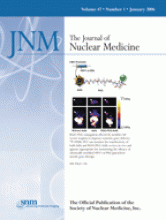Abstract
Changes in regional myocardial perfusion throughout the entire coronary vascular tree, as opposed to changes in the worst regional perfusion defect, have not been described during long-term regression or progression of coronary artery disease (CAD) or related to clinical outcomes. Methods: Four-hundred nine patients with CAD undergoing dipyridamole PET at baseline and after 2.6 ± 1.4 y were followed over 5 more years for coronary events. PET images were objectively quantified by automated software for changes in severity of the (i) baseline worst quadrant, indicating the worst flow-limiting stenosis at baseline PET; (ii) follow-up worst quadrant, indicating the worst stenosis on follow-up PET; and (iii) maximal change quadrant, indicating the largest change of any same quadrant pair from baseline–to–follow-up images. Results: At follow-up PET, new regional perfusion defects were seen in 40% of patients. In 77% of patients, the greatest change was in a quadrant different from the worst baseline defect. The maximal change quadrant improved in 70% of patients on intense lifestyle and pharmacologic lipid treatment, in 48% on moderate treatment, and in 39% on poor treatment (P < 0.0001). Combined quadrant changes integrated throughout the heart independently predicted cardiovascular events at long-term follow-up. In contrast, changes of any single baseline–to–follow-up quadrant pair did not. Conclusion: By PET, 77% of patients with CAD had the greatest perfusion changes in areas different from the baseline worst perfusion defect and 40% had new perfusion defects. Changes in perfusion defects throughout the entire coronary vascular tree predicted coronary events, whereas changes in the worst flow-limiting stenosis at baseline or in any one segment of myocardium did not. To our knowledge, these data provide the first direct evidence on mechanisms for disproportionately greater reduction in cardiac events than changes in single stenosis severity with lipid treatment.







